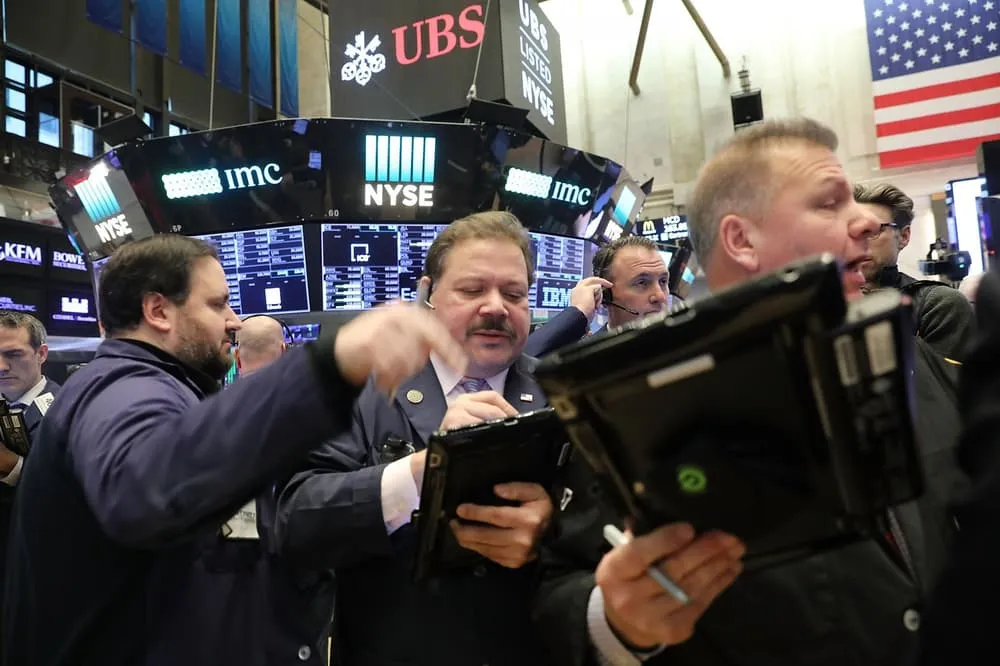In the Hope of More Room for Negotiation in Trade Talks, Stocks Hold Steady
U.S. stock markets opened relatively flat on Tuesday, with investors cautiously digesting President Donald Trump’s renewed tariff threats, which left some space for the possibility of further negotiations. The tone in the equity markets remained measured, as investors tried to assess whether the proposed trade actions would escalate or soften in the weeks ahead.
The S&P 500 Index inched up by 0.03% just after the opening bell in New York, with seven of the eleven industry sectors in positive territory. Gains were led by health care and energy shares. Meanwhile, the Nasdaq 100 rose by 0.2%, reflecting modest strength in tech-related stocks, while the Dow Jones Industrial Average slipped by 0.2%.
Among notable movers in individual stocks, clean energy companies like Enphase Energy and SolarEdge Technologies declined. The weakness followed Trump’s push for new restrictions that would limit access to federal tax benefits tied to solar and wind energy projects. Another notable loser was Ciena Corp., which fell after Morgan Stanley downgraded the stock to "underweight," citing limited near-term potential for margin expansion.
On the upside, Tesla Inc. shares rebounded after suffering a sharp decline on Monday. The stock’s bounce helped lift several large-cap technology names. Additionally, semiconductor stocks remained in focus after Samsung Electronics reported a drop in profits for the first time since 2023, raising questions about demand in the chip sector.
President Trump added further uncertainty to the market with a social media post on Monday in which he published a series of letters to various nations. The communications included his plan to introduce 25% tariffs on imports from Japan and South Korea, and outlined similar actions against products from countries such as South Africa, Indonesia, Thailand, and Cambodia. However, Trump also left the door open, suggesting the August 1 implementation date wasn’t final and hinting that rates might still be adjusted.
Despite the trade tensions, the mood among equity strategists turned slightly more optimistic. Goldman Sachs raised its U.S. stock market forecast for the second time in two months, driven by expectations that the Federal Reserve may begin cutting interest rates sooner than expected. Bank of America joined in the bullish sentiment, increasing its year-end target for the S&P 500 to 6,300 from a previous estimate of 5,600, emphasizing the resilience of American companies. “It’s dangerous to underestimate Corporate America,” BofA analysts noted.
eToro’s U.S. investment analyst Bret Kenwell struck a balanced tone, reminding investors that markets had just recently touched record highs. “While trade tensions are resurfacing, it’s important to remember that we’re only one session removed from new highs in both the S&P 500 and Nasdaq,” he said. “After a strong second quarter and a quiet start to July due to the holiday, mild profit-taking is actually healthy.”
Still, some market participants advised against getting too comfortable. Strategists pointed out that trade uncertainties remain unresolved and can spark renewed volatility. Arthur Hogan, chief market strategist at B. Riley Wealth, emphasized that even seemingly positive developments come with caveats. “This extra time before tariffs kick in just extends the uncertainty for businesses and consumers. Everyone is in limbo, hoping the delay leads to a better outcome.”
A separate study by Oppenheimer & Co. also offered a reason for caution. Although the S&P 500 has set new record highs in recent weeks, market breadth—the number of stocks making new highs relative to those making new lows—remains unusually narrow. Their analysis showed that just 88 more companies hit new highs than new lows on the New York Stock Exchange. Historically, such a thin margin has signaled potential trouble ahead.
According to Oppenheimer’s data going back to 1972, whenever the S&P 500 rallied to fresh records with a breadth margin of 100 or fewer stocks, the index tended to underperform over the next 12 months. This suggests that, while headline indices are climbing, participation across the broader market remains weak—often a warning sign that momentum may not be sustainable.
In summary, while the equity market held relatively steady amid new tariff threats, investor sentiment remains mixed. Optimism about Fed rate cuts and strong corporate fundamentals is being weighed against concerns about trade policy and narrow market leadership.
As investors look toward the rest of the summer, the interplay between political developments, central bank actions, and market internals will likely continue to drive short-term sentiment.

Subscribe to our newsletter!
As a leading independent research provider, TradeAlgo keeps you connected from anywhere.








